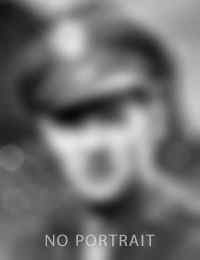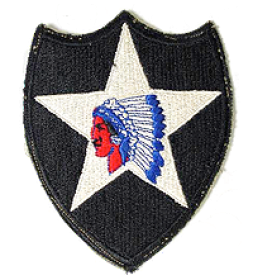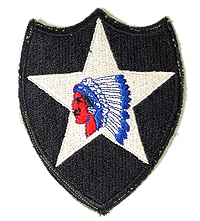At the time I was a young 2d Lieutenant of artillery. I found that was great because I love to hunt And shooting artillery was like hunting with a gun that shot bullets that weighed 33 Pounds. Also, I joined a tough Regular Army Division of professional soldiers. Most Were Texans who are the best soldiers in the world with the sole exception of South Carolinians. Early in June my battalion was loaded on a filthy Polish coal freighter, named the Krakow. Before daylight on 6 June we found ourselves in the midst of an Immense array of ships of all sizes. Two fine divisions, the First and the 29th, were making the initial assault at Omaha Beach and mine, the Second Infantry Division, was the third or build-up unit. Another force was going ashore at Utah Beach a few miles away and the Brits and Canadians to our East at Caen.
The first troops ashore had a desperate time with minefields and bared wire. The Germans in concrete fortifications were on the top of the high sandy bluff. The Americans literally had to blow a living path through the minefields with their bodies. But 1500 men in single file charged up that narrow pathway and got behind the Germans. The German unit there was the 462d, not a crack outfit and had many Russian volunteers. Over one million Russians fought in the German forces, usually in Russia against the Communists.
The other officers and the guns in my battery were on one flat bottom Landing Craft. I was in charge of 100 men and two vehicles in another landing craft. We hit a Sandbar and the first vehicle loaded with men disappeared in a hole between the sandbar and the water's edge. Most of the men swam ashore but a sergeant and I had to dive in and drag to the beach a young private who panicked and-was drifting away.. We formed up and started up the sandy cliff. The first dead Americans I saw had, when dying, wrapped their amis companionly about each other in a ritual of death. We found a field in the dark on top of the bluff and dug our foxholes.
The next morning I found a n elbow of a German sticking out of the side of my hole. I discovered that this body was booby trapped with a grenade under each armpit with the pins pulled. Lucky I had not jostled him. Later that morning we rejoined the rest of our men and two days after that I was shot in the hip by a sniper. It was not serious but they sent me back to the air field to fly as an aerial observer in our light Piper planes. Once I was sitting in the back seat when a German Focke Wulf 190 fighter popped out of a cloud and went for us. Sam Francis, my pilot, put the little plane in a vertical dive. He was able to pull out near the ground and flew underneath the limbs of a gigantic live oak tree. The German plane, going faster, hit the top pfthe tree and exploded. Sam got credit for a "kill".
The first attack I made with an infantry company was at a tiny village named St George d'Elle in the forest of Cerisy. There were 200 men and five infantry officers. An hour later 100 men were dead or wounded and all infantry officers were dead. I Had to take command and withdraw the survivors under heavy fire. I then set up my Observation post in the church tower. I saw an German officer in a black uniform Climbing a tree 200 yards away, obviously a tank officer planning a tank attack. I Radioed this to headquarters when I heard a shot from one of my own men. The german fell out of the tree and my man dropped his rifle and ran out of the church through the Gen-nan outposts to where this officer lay. Private Patrick came running back- bullets flying everywhere, waving the German's pistol and glasses. 1 still have those glasses.
We finally captured Hill 192, our main objective since it overlooked the road net leading to the big city of St Lo. My sergeant and I were standing in two holes dug by the Germans. From our waists up we were visible, as we searched with our glasses for Targets, a German hyper-velocity 88mm cannon fired and immediately we were knocked down and the hair on the side of our heads facing each other burned off by the super fast shell passing between us, although we were only 4 feet apart Then, like Brer Rabbit "We laid low" We began pushing south, seeking to encircle the German forces. Once my sergeant and I crept up to a hedgerow and raised up to spot a target, but at that same moment and spot a German soldier came up opposite us. He had a rifle with bayonet and he lunged across the hedgerow at us. The sergeant, a 6'6" Texan, grabbed him by the throat and pulled him across . "What do you think we ought to do? It is a long way to the POW cage and the infantry will not take any of our prisoners off of us." But it was too late, he'd choked the German to death.
On 3 August we reached a village called Etouvy. Late that day a German shell hit a tree above me and a fragment of steel drove deep into my back. I radioed the battery but found the only other forward observers had also been wounded. Lt Uhlemeyer had been badly hit and evacuated. Lt Grinells had had his marriage tackle shot away. If I also left, the infantry would have no artillery protection and artillery is what kills most of the enemy. I decided that I could hobble a mile to our next objective. The next morning I set out, but before long a 60 mm mortar shell hit three feet behind me putting 27 holes, some 1,5 inches deep, in my back, and blowing all of the back of my coveralls off. We started to run and a soldier set off a mine and I got a few more holes in my back from that. My men dragged me 500 yards to a road where fortunately they found a jeep that had just brought a load of ammo to the infantry. Otherwise, I would have bled to death. They laid me over the hood of the jeep and I blacked out. Four times I been wounded, always in the rear and from then on, I was named "High Silhouette".
Four months later I was able to rejoin my division just before the Battle of the Bulge, that biggest battle US troops have ever fought. My unit was in southern Belgium and the main German attack was programmed to go exactly through our units' position. The green US division on our right broke and ran in the first hour of the fighting. For 48 hours my division held that sector against four SS tank Divisions and four Volks Grenadier divisions. Later the senior German leader. Marshal Manteuffel said that entire attack with a front of several hundred miles failed because the second Infantry Division became a brick wall!! Some of our infantry battalions lost 80-90 percent of their men, BUT THEY HELD!
Afterward I was again flying as an artillery observer when our plane was caught In a blizzard of bursting 20 mm shells. One wheel was shot off, all the glass windows Were shot out and a bar off my field jacket. Sam Francis got us home, landed on one Wheel, went down the runway and dropped the wing in a snow bank. Two weeks later we captured some Germans from that ack ack outfit and I got to interview them. They said they had been promised leave if they shot down "General Elsenhower's plane". I asked how they knew he was in that plane. They said they used a very powerful scope and could see the red flag on the wing with so many stars, it had to be Elsenhower!! I never put my Confederate flag on the strut again !! So that was my first war.




